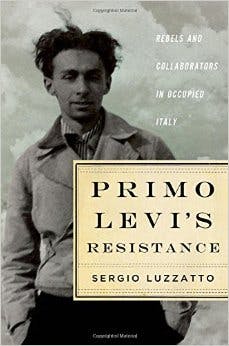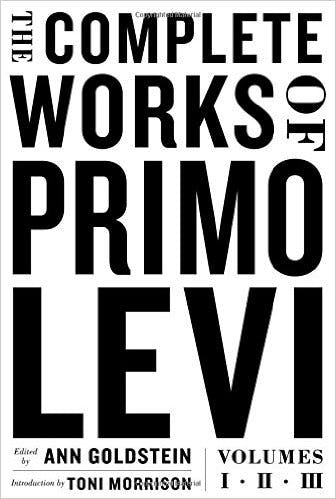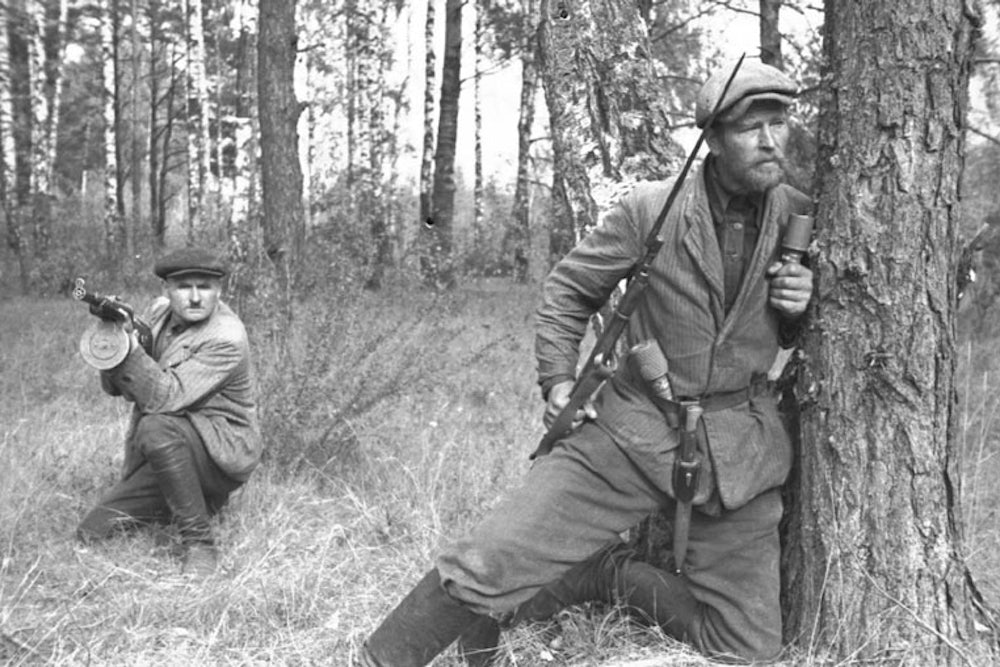In September 1943, Primo Levi took to the mountains in northwest Italy to escape the Nazis. A keen mountaineer since the age of 14, for Levi the Alps had long been a sanctuary for physical release and spiritual recovery. High up in the alpine tundra, he exulted in hard battle with the elements, the same “Mother-Matter” he confronted at the Chemical Institute in Turin, where he worked as a chemist on the molecular structure of carbon. The mountain’s geological morphologies, the combined sense of its instant creation and eternal presence, the fellowship amongst climbers roped together across pleated terrains: these had been Levi’s greatest pleasures. “Evenings spent in a mountain hut,” he later wrote in a short story called “Bear Meat” (1960), “are the most sublime and intense that life holds.” But after the Nazis established Mussolini’s Republic of Salò and occupied the north of the country, intensifying the roundup and deportation of Jews, the “rocky gymnasiums” became his place of greater safety.

Levi had never intended to pursue armed resistance against the Germans. “I was a young bourgeois pacifist and I’d rather have died than shoot anyone”, he recalled in an interview with his biographer, Ian Thomson. Like a lot of Italian Jews, he thought the best option was to wait for an Allied liberation. But Nazi-Fascism presented an unforgiving choice for most Jewish citizens of occupied Europe: hide, resist, or, as Arendt documented in Eichmann in Jerusalem, cooperate. Levi’s initial concern was for the safety of his mother and sister, and on September 9 they left for St. Vincent, a spa town 100 kilometres north of Turin in the Valle d’Aosta, where they stayed with friends. But after the Nazis drowned forty-nine Jews in Lake Maggiore near Switzerland, including Levi’s uncle, Mario, any hesitations he had about armed resistance disappeared. On October 1, along with a couple of disbanded Italian soldiers, as well as other Jewish refugees and anti-fascists, Levi became part of a small and shambolic resistance group.

Sergio Luzzatto’s newly translated Primo Levi’s Resistance: Rebels and Collaborators in Occupied Italy is the story of Levi’s time as a partisan. Drawing on materials housed in local archives throughout northwest Italy, as well as interviewing many of those involved in the early Resistance, his book is a micro-history of what happened in the two months between Levi becoming a partisan and his arrest and deportation to Auschwitz in December 1943. The most intriguing part of Luzzatto’s story, though, is an event that took place a few days before Levi’s capture, when his band executed Fulvio Oppezzo and Luciano Zabaldano, two teenagers accused of threatening the secrecy and survival of the rebel group. After the war, Levi remained disturbed by the execution, and questioned the lengths people in conditions of weakness go to survive. His writings were not just shaped by his experience of Auschwitz, but by a life at the frontier of powerlessness as both a partisan and a prisoner.
It is still Levi the prisoner that we know best, and this is what informs much of his writings. Levi recorded his experience of the Holocaust in If This Is a Man (1947), and over the following decades gained success as a writer who, with astonishing self-control, chronicled Europe’s tragic danse macabre. Yet as Ann Goldstein—editor of the Complete Works of Primo Levi—notes, the tag “Holocaust writer” does Levi “a regrettable injustice”. A remarkable three-volume set of memoirs, novels, short stories, essays, commentary, book reviews, and poetry, the Complete Works now enables us to appreciate the tangle of forms and identities that defined Levi as a writer: memorialist and fantasist, scientist and sensationalist, puritan and jester, poet and political commentator.
What most clearly stands out from this body of work is the experience of violence in service of the absolute—absolute racial purity, for example, or absolute security and freedom, or absolute control over people through force, or even the absolute mastery of the material world through scientific endeavor. He even argued that “perfect happiness” was unattainable, owing to the certainty of our death, nor “perfect unhappiness”, since death saves us from the daily agonies of existence. For Levi, then, the twentieth century was so violent because societies strove for the absolute and infinite, and much of his work documented the experience of the powerless when confronted by that ambition.
In contrast to fascism’s hate of difference and irregularity, Levi celebrated the fine gradations of being in The Periodic Table (1975), a memoir of his life in chemistry:
In order for the wheel to turn, for life to be lived, impurities are needed, and the impurities of impurities in the soil, too, as is know, if it is to be fertile. Dissension, diversity, the grain of salt and mustard are needed: Fascism does not want them, forbids them, and that’s why you’re not a Fascist…. Immaculate virtue does not exist either, or if it exists it is detestable.
Natural Histories, a collection of Huxley-esque science fiction stories first published in 1966, is another example of the cohabiting themes and anxieties that imprinted themselves on Levi after what he witnessed between 1943 and 45. Written in an absurdist key, he mixed the potential of science to attain absolute control and understanding of the physical universe with a deep paranoia of its subversion by the wild spirit of the innovator, the unpredictability of experimentation, and the consequences of human vanity.
In “Angelic Butterfly,” one of Levi’s most disturbing fictions, Dr Leeb, a researcher based on the Auschwitz physician Josef Mengele, transforms humans into birds, which are then devoured by hungry crowds (the story takes place in post-war Germany, which Levi said was “a civilized form of reprisal”). Similarly, “Versamnia” is about the attempt to convert complete pain into pure pleasure, during which the human subjects loose their minds and the inventor commits suicide. And in “The Magic Paint,” in which Levi displays a dark comedic genius, it is the pursuit of everlasting luck that causes death. Having discovered a paint that brings good luck to anyone exposed to it, the scientist-narrator calls on an old friend, Michele Fassio, whose gaze from the right eye brings him eternal misfortune. After having the right lens of his glasses coated in the magic paint, Fassio puts them on and dies immediately—the lens was concave, reflecting his powers of bad luck off the paint and back into himself, a “blameless victim of our experiment”.
But Levi wasn’t just concerned with the tragic, usually violent, consequences of pursuing the absolute. He also grappled with the origins and nature of that violence. As a partisan, he participated in a brutal execution in the winter of 1943, and as a Jew he witnessed the industrial murder of entire peoples. Both issued, in different magnitudes, from what Levi called “the sleep of reason”. But they also resulted from contrasting positions of power: the paranoid fragility of the early partisan movement on the one hand, and the “indiscriminate power” of Nazi Germany on the other. Levi’s writings are not celebrations of the human spirit, as is so often claimed, but reflections on the effects that power and powerlessness have on the human capacity for violence.
Levi’s mountain rebels in Aosta were too weak and inexperienced for effective guerrilla warfare. His only weapon, he recalled, was a tiny pistol, “all inlaid with mother of pearl, the kind used in movies by ladies desperately intent on committing suicide”. The group’s leader, Guido Bachi, would later admit that they weren’t really partisans at all, but simply “refugees—Jews on the run”. Many rebels also mistook banditry for resistance. Partisans were free from the codified norms of national armies, and could devise their own protocols. Young men, armed and proud, descended into towns and villages in the name of resistance and assaulted locals, hijacked cars, plundered food, and burnt property—willful violence cloaked in the mantle of anti-fascism.
Luzzatto ascertains that Oppezzo and Zabaldano’s unruliness ultimately led to their executions. They had terrorized locals around the village of Amay, threatening to denounce to the fascist authorities anyone who tried to prevent them. On 8 December 1943 they joined up with Levi’s band of rebels. The next day, their new alpine comrades executed them. There was no trial, no solemn march to a remote clearing where deadeyes lined up and fired. The killing was sudden and without warning, a volley of bullets in the back as the youngsters walked through the snow—it was known as “the Soviet method.”
Luzzatto is less concerned with who actually shot them. What’s important is the severity of the punishment, which, he writes, Levi’s partisans “can only have arrived at after searching their consciences”. The decision to execute was a collective one, which Levi granted in The Periodic Table. In the chapter ‘Gold’, an account of his arrest and imprisonment by fascist militiamen, he admitted publicly for the first time his part in the ‘ugly secret’:
an ugly secret weighed on us, in every one of our minds…. Conscience had compelled us to carry out a sentence, and we had carried it out, but we had come away devastated, empty, wanting everything to finish and to be finished ourselves; but also wanting to be together, to talk, to help each other exorcise that still so recent memory. Now we were finished, and we knew it; we were in the trap, each one in his own trap, and there was no way out but down.
Like so much of the early days of anti-fascist resistance, seen close-up, the application of physical force is stripped of all romanticism. Levi’s partisans weren’t indomitable heroes in steadfast pursuit of victory. Even if their original intentions were good, they were neophytes who, weak, powerless, and desperate to survive the Nazi dragnet, turned to violence and immediately regretted their decision (Levi said that afterwards, they lost the will “to resist, even to live”).
Levi’s participation in the execution is well known. Ian Thomson mentions it in his biography Primo Levi, as do Carole Angier in her book about Levi The Double Bond and Myriam Anissimov in Primo Levi: Tragedy of an Optimist. But Luzzatto zeroes-in specifically on this episode, and in so doing, is more judicious and systematic. He writes with verve (rendered beautifully into English by Frederika Randall), and has mined a great many sources to provide a decent account of life under arms in the Aosta Valley.
Yet his conclusions are no more assured than previous interpretations. It still remains unclear how much Levi was involved beyond the debate to execute (was he
a triggerman, for example?). Nor whether the lawless behavior of Oppezzo and Zabaldano was the real reason for the execution. It also cannot be proved that Levi participated in the burials of the two teenagers. Luzzatto speculates that he did, pointing to his poem ‘Epitaph’ (1952) that is “far from any kind of historical proof”, but that provides the strongest suggestion. The narrator in the poem is a dead partisan, buried beneath the soil of Aosta. Like Oppezzo or Zabaldano, he was condemned to death by his comrades:
Here where my comrades dry-eyed buried me, […]
I, Micca the partisan, lie here. Brought down by my comrades
For no small wrong, and not many years ago,
Nor many years did I have when I met the night.
The sporadic clues in Levi’s writings that allude to his “ugly secret” are tantalizing in their promise to yield more treasure about a darker past. Luzzatto’s book is in part hostage to this temptation. He readily admits that he might be “insisting on a very minor episode in the overall experience of the Italian Resistance, not to mention in Primo Levi’s personal existence.” A harsh conclusion might be that this book is, above all, about the imaginative license the historian has when confronted with patchy source material.
It is, however, clear that the experience of the execution deeply informed Levi’s writing and thought. Levi forged his voice in opposition to neat moral distinctions like good and evil, innocence and guilt, justice and injustice, honesty and deceit, strength and weakness, perpetrators and victims, and life and death. For him, these coexist in one and the same person in precarious balance. While he never denied the goodness of human nature, the essential truth of his works—filtered through his experiences of Europe between 1943-1945—is that powerlessness, too, or desperate weakness, manifests itself in the baser part of our natures. What else can the absolutely powerless do when confronted by absolute power?
In The Drowned and the Saved (1986), his final work on Auschwitz written one year before his suicide, he described those who survived, like he did, as driven by despair to all forms of egoism, violence, insensitivity, and collaboration. Only the “drowned”, those who never returned, “did not plumb the depths” of moral compromise: “The best all died”. This was not to condemn the “saved”, only to recognize that powerlessness served to accelerate the violent and calculating potential within men and women. This, if anything, was the true sign of victimhood—being forced to unlock the darker side of human nature.
Like the mythical creature the centaur, a symbol of man’s liminal status, humans, Levi believed, live in a state of tormented oscillation between conflicting moral drives, such as virtue and cruelty, truthfulness and deception, courage and cowardice. (Natural Histories also contains a fable called “Quaestio de Centauris,” in which Levi imagined himself as half man, half horse). In conditions of extremity, like a death camp, that oscillation is of course more radical. But it was also a state of being Levi recognized during his time as a partisan, as he put it in the poem ‘Partigia’ (1981):
What enemy? Every man’s his own foe,
Each one split by his own frontier,
Left hand enemy of the right.
Stand up, old enemies of yourselves,
This war of ours is never done.
Luzzatto examines Levi as someone who, after being part of an execution, was aware of being “split by his own frontier” between wanting to do good on the one hand, and being capable of extreme violence and bloodshed on the other.
Levi’s brief account of life in the Resistance in The Periodic Table was published in 1975, a moment in Italian history when the Resistance was celebrated with unqualified certainty. To portray it as something less than wholly virtuous—and as something that led to his eventual imprisonment in Auschwitz—was an example of his characteristic honesty. Levi knew better than most that the fight against Nazism was an undeniable good mixed with incidents of profound wrong. No human was entirely free of these ambiguities. For him, categories of good and evil aren’t to be found in extremis, only choices and compromises.
Primo Levi’s Resistance provides the most in-depth account of the most formative experience of Levi’s outside of Auschwitz, and reveals a side of Levi we’re not used to seeing—a man implicated in a most pointless killing. The significance of The Collected Works is that it gives us a far more eclectic and interesting writer, one who ranged across a vast intellectual terrain that included astronomy, history, linguistics, classical literature, art, current affairs, memory, and religion. Together, the books not only show the formative effect violence as both a partisan and a prisoner had on his writings, as well as the fundamental relationship between violence and powerlessness.
They also display the basic honesty of Levi’s work: the human condition as one of countless moral shades. Perhaps that is why, away from writing, he loved mountaineering, because of its refreshing certainties. Spared of the complications of human existence, which he celebrated but found so exhausting, rock climbing came down to nothing more than the strength of a piton driven into the mountainside. As he wrote in The Periodic Table: “the rope holds or it doesn’t”.
